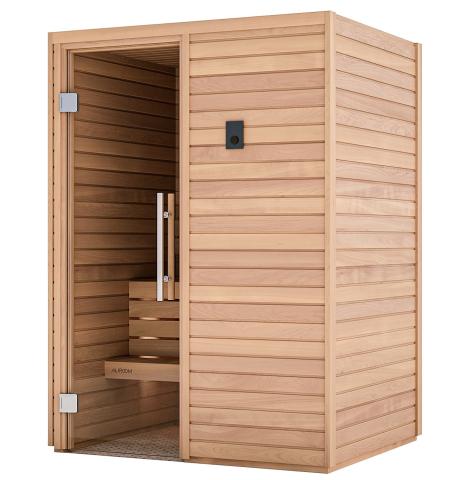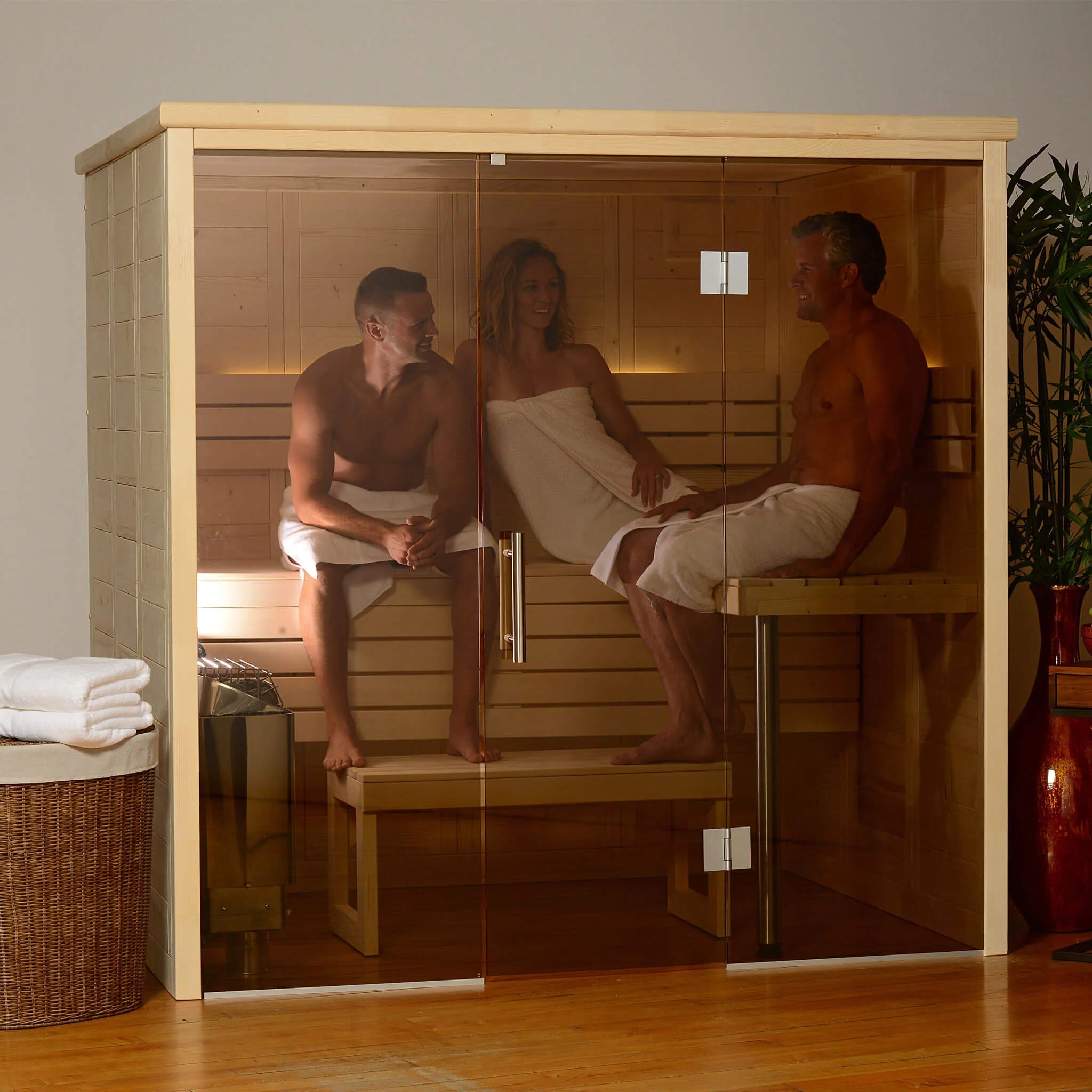The Basic Principles Of Traditional Sauna
The Basic Principles Of Traditional Sauna
Blog Article
Traditional Sauna Fundamentals Explained
Table of Contents5 Simple Techniques For Traditional SaunaThe Buzz on Traditional SaunaThe Single Strategy To Use For Traditional Sauna4 Simple Techniques For Traditional SaunaNot known Details About Traditional Sauna
Energy savings is something to take into consideration for people who intend on utilizing their sauna regularly. For a conventional sauna, bathers generally require to wait on 30-40 minutes for the area to preheat prior to going into. Infrared saunas, on the other hand, typically reach their ideal temperature level in about 15 mins.That indicates that in an infrared sauna, bathers can start enjoying their sauna immediately. One difference in between the two types of sauna that is usually neglected is the social experience.

Getting My Traditional Sauna To Work

Try a sauna today and find some of the amazing benefits on your own!.

Factors such as warm tolerance, wanted level of detoxing, and general wellness ought to be considered when choosing which kind of sauna to use. Infrared saunas are a type of sauna that utilize infrared light to warm the body directly, instead than warming the air around the body like conventional saunas.
Some Known Factual Statements About Traditional Sauna
The temperature in an infrared sauna is commonly reduced than in a typical sauna, with temperature levels varying from 120F to 150F. Infrared saunas use a variety of advantages that make them an attractive option for those seeking to improve their health and wellness. Several of the benefits of infrared saunas include: Infrared saunas utilize lower temperatures than typical saunas, which can make them more comfy for those who discover heats hard to endure.
This can aid to promote relaxation, decrease muscle stress, and eliminate pain. Some experts recommend that infrared saunas might use advantages for relaxing a sore throat. Infrared saunas have been shown to aid the body remove contaminants with sweating. Sweating can also help to boost skin health and wellness by eliminating contaminations and dead skin cells.
The warmth produced by infrared saunas can aid to enhance blood flow and boost circulation. Infrared saunas have actually been shown to assist reduce anxiety and promote relaxation.
With their reduced temperatures, article source deep infiltration, and range of wellness benefits, infrared saunas are a fantastic method to relax, unwind, and enhance your total health. Standard completely dry saunas have been around for centuries and are still prominent today. They are typically heated up with timber, gas, or electrical energy and have low humidity degrees.
See This Report about Traditional Sauna
There are several advantages to making use of a conventional dry sauna. Right here are a few: Relaxation: The high temperature and low humidity in typical completely dry saunas can aid relax the muscles and decrease tension levels. Cleansing: Sweating in a sauna can help eliminate contaminants from the body, which can improve total wellness.
When it involves saunas, there are 2 primary kinds of heating methods: conventional and infrared. Conventional saunas use heated air to warm up the body, while infrared saunas make use of infrared radiation to pass through the skin and warm the body from within. One of the main distinctions between the two methods is the kind of warmth they create.
Traditional saunas warm the air, which then heats the body via convection. Infrared saunas, on the various other hand, warmth the body directly via radiation.
In regards to energy performance, infrared saunas are typically more reliable than standard saunas because they need less power to operate. They also warm up quicker, so they can be made use of for much shorter sessions. Traditional Sauna. When it pertains to the impacts on the body, both sorts of saunas have actually been shown to have benefits
Facts About Traditional Sauna Uncovered
Infrared saunas have been revealed to have comparable benefits, in addition to possibly assisting with detoxing, skin health and wellness, and immune feature. Overall, the selection between a typical or infrared from this source sauna boils down to personal preference and specific demands. Traditional saunas may be better for those who like greater temperature levels and a more intense sweat action, while infrared saunas might be much better for those visit this site right here who want a more gentle and efficient warmth treatment.
Both types of saunas provide special advantages and downsides that need to be taken into consideration prior to deciding. The choice in between an infrared sauna and a traditional dry sauna largely depends on personal preference and the preferred benefits. Those who choose a more comfortable, lower temperature setting might favor an infrared sauna, while those that are seeking extreme warmth and a typical sauna experience might like a standard dry sauna.
Right here are some safety suggestions to maintain in mind when utilizing infrared and traditional completely dry saunas:: Saunas can trigger too much sweating, bring about dehydration. It is very important to drink lots of water previously, during, and after sauna sessions to remain hydrated.: It is recommended to restrict sauna sessions to 20-30 minutes to avoid overheating and dehydration.
Report this page